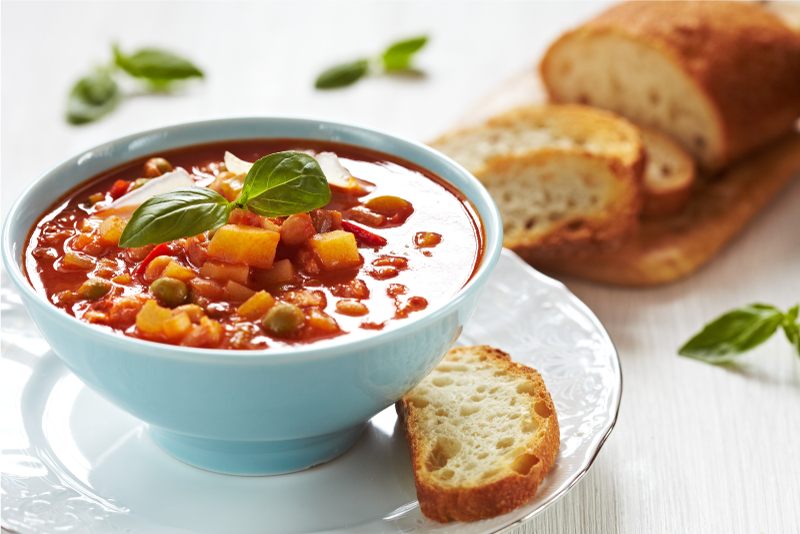
The word soup comes from the French word “Soupe” which was derived from the Latin word “Suppa” (bread soaked in broth). The origin of soup dates to 6000 BC.
A soup is a flavourful and nutritious liquid food that plays an important role in the menu. It can be served as an appetizer to stimulate one’s appetite for heavier foods or served as a second course after hors d’oeuvres. The base of soups is derived from meat, poultry, fish or vegetables, but no matter what their final ingredients are, the soup is based on the stock used.
Soups can be divided into two types – thick and thin soups. This is further classified into various categories – Passed, Unpassed, Cold and International Soup based on the texture of the soups or a national soup from a particular country.
Thin soups
It is a clear liquid food that is prepared without a thickening agent and can be served plain or garnished with a variety of vegetables and meats. Thin soups can be full of bold and distinct flavours and doesn’t taste watery. It can be further classified into passed and unpassed soup such as consommé, bouillon or broth.
Passed soup – Consommé
Made by adding a mixture of ground meats with vegetables like carrots, celery, onions and tomatoes and egg whites into the broth. It offers a wide range of nutritional benefits while keeping your digestive systems clear, making it a popular food when you’re feeling under the weather. Consommé can be served hot or cold.
Unpassed soup – Broth or Bouillon
A common clear soup, it comes in a variety of flavours like chicken, beef, vegetables or mushroom. Bouillon can also come in powdered form such as stock cubes. Broth or bouillon are made from bones, meat, fish and vegetables that have been simmered long enough where the gelatin thickens, creating a flavourful stock.
Thick soups
Thick soups are thickened using corn starch, cream, vegetables, gelatins or other ingredients. The texture of the soup depends on how you thicken the soup. Here are the types of thick soups.
Bisque
A creamy thick soup that consists of shellfish puree and then thickened with rice or cream. Expensive to prepare and rich in taste, the flavour is usually enhanced with wine or brandy. Bisque is considered a luxury soup and best served for dinner.
Cream

They are prepared with a puree of vegetables, poultry, fish or meat and thickened with bechamel sauce or a cream finish.
Velouté
A French word which means velvety, it describes the texture and appearance of the soup. To achieve the velvety finish in a velouté, the liaison of egg yolks and cream is added just before serving.
Chowders
Originating from America, chowders are chunky hearty soups made from fish or shellfish, thickened with potato and finished with cream or milk.
Puree
Puree soups are made by simmering high-starched vegetables like potatoes or pumpkin in stock and then pureeing the soup.
Cold soups
Popular in countries where the weather can get scorching at times, they are refreshing yet filling. Cold soups are served cold but not chilled as chilling can dull the flavours and aroma of the soup. It can be a thick or thin soup. Some examples of cold soups are gazpacho, vichyssoise or naengmyeon.
International soups

As soup has been part of many cultures for centuries, different countries have their own version of soups. International soups are soups that originate from different places or locality like French onion soup from France, minestrone from Italy or Mulligatawny from India.
What’s your favourite type of soup? Do you prefer thick or thin soup, creamy or clear?
